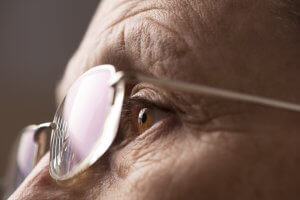Exotropia

Voted Best of Berks—
eight years in a row!
Your child has been diagnosed with exotropia. This condition occurs in approximately 1% of children and develops between 6 months and 5 years of age.
Symptoms
Exotropia means an eye is turned outward relative to the other eye.
Most children with exotropia have intermittent exotropia. Intermittent indicates that your child’s eyes are not always turned outward. At certain times your child’s eyes may be straight and at other times an eye may drift outward. The outward drifting is often most apparent when your child is tired or inattentive, particularly in the evening.
In the majority of children, this outward drifting occurs primarily on distance viewing. Therefore, when your child looks directly at you up close the outward turning of the eye may not be visible.
Your child may develop double vision when his/her eye drifts outward. At first, your child may close the drifting eye to prevent double vision. This double vision may also induce your child to straighten his/her eyes. As your child’s eye drifts outward more frequently he/she will become used to this misalignment. In effect, your child will “turn off” the drifting eye to prevent double vision. This will lead to more frequent outward drifting of the eyes. Finally, your child may completely loose the ability to use the eyes together and become constantly exotropic.
In contrast, some children have an eye which drifts out more while reading. This may cause various symptoms such as eyestrain, headaches, difficulty with prolonged periods of reading, and blurred vision.
Prognosis
Without treatment, 75% of children with exotropia will worsen over time. 15% of children will improve without therapy. 10% of children will remain the same.
Treatment
Glasses
Glasses will be prescribed if your child is nearsighted. By improving your child’s distance vision, glasses will often improve your child’s control of his/her ocular misalignment.
Children who are very farsighted or astigmatic are also given glasses. Again, by improving your child’s vision the exotropia will often improve. In certain unusualcircumstances bifocal glasses may be prescribed.
Patching:
If your child has amblyopia, or a “lazy eye,” the eye with good vision will be patched in order to improve the vision in the eye with poor vision. The treatment of amblyopia is very important. Children with untreated amblyopia will always have difficulty using their eyes together.
Older children may refuse to wear a patch. If your older child refuses to wear a patch, drops may be given. These drops blur the vision in the better seeing eye and are a substitute for a patch. Both treatments will improve the vision in the amblyopic eye.
Exercises
Eye exercises, properly called orthoptic therapy, may be indicated in certain cases of exotropia. Orthoptic therapy is often used in children who cannot turn their eyes inward normally while looking at close objects. Orthoptic therapy may also be used in children who have small amounts of exotropia.
Observation
If your child’s eyes only turn outward occasionally, no treatment may be necessary. It is important that you notice how often your child’s eyes turn out. If this outward turning begins to occur more frequently, further treatment may be indicated.
Alternate Occlusion
If your child’s eyes turn out frequently, treatment may be indicated to prevent further worsening of your child’s control over his/her deviation.
Alternate occlusion attempts to prevent your child from learning to “ignore” an eye by forcing your child to use each eye individually. In many cases, alternate patching can decrease how often your child’s eyes turn outward.
To perform alternate occlusion, an eye is patched for a few hours per day. One eye is patched one day and the other eye is patched the next day. For example, the right eye might be patched for three hours on Monday, the left eye is patched for three hours on Tuesday, the right eye is again patched for three hours on Wednesday and so on.
Some children prefer to let one eye drift more than the other eye. If this is the case, the eye which your child prefers to look with might be patched more frequently. This patching will prevent your child from ignoring the eye which drifts. Your doctor will customize a patching regimen for your child.
Surgery
Many children with intermittent exotropia will eventually require surgery. Strabismus surgery may be indicated if your child’s eyes frequently turn outward. Surgery would also be indicated if your child’s control over his/her ocular misalignment is clearly worsening.
During surgery the extraocular muscles, which control the position of the eyes, are weakened or strengthened.
Strabismus surgery is usually successful. In fact, approximately 70% of children will require only one operation to obtain a satisfactory result.
After surgery it is frequent and often desirable for your child’s eyes to be turned inwards slightly. This will usually resolve after a few weeks or months. Sometimes drops or glasses will be used to straighten eyes that are turned inwards after surgery.
Please note that in some children an eye may begin to drift outwards again months or years after an initially successful surgical procedure. Therefore, it is important to continue to observe your child’s eye position.
If you have any questions or concerns, please contact David S. Goldberg, M.D. at (610) 378-1344
Find a Doctor
Physician information including education, training, practice location and more.
Schedule an Appointment
Call 800-762-7132 or make an appointment online.





